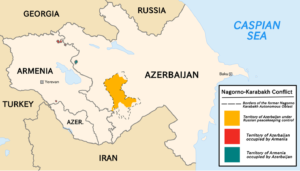20 September 2023 : Daily Current Affair
Daily Current Affairs
20-September-2023
Daily Current Affairs For UPSC ,Daily Current affairs of The hIndu and Indian Express.
1. Govt. introduces women’s quota Bill in Lok Sabha; PM calls for a consensus.
Topic: GS2 – Indian polity
Context:
- The Indian government, led by Prime Minister Narendra Modi, introduced the women’s reservation Bill in the Lok Sabha.
More information about the news:
- The Bill aims to reserve one-third of seats in the Lok Sabha (Lower House) and State Assemblies for women.
- It is officially known as the Constitution (One Hundred and Twenty Eighth) Amendment Bill, 2023.
- Implementation of the Bill will occur after the 2026 delimitation exercise, using data from the upcoming Census.
- The reservation for women in the Lok Sabha is expected to be realized in the 2029 elections, not in 2024.
- The Bill was introduced with an appeal from the Prime Minister for consensus among both Houses.
- According to Union Law Minister Arjun Meghwal, the number of women members in the Lok Sabha would increase from 82 to 181 once the law is enacted.
2. Three Hoysala temples declared World Heritage Sites
Topic: GS1 – Indian art and culture
Context:
- The Hoysala temples located in Belur, Halebid, and Somanathapur in Karnataka, India, have been declared UNESCO World Heritage Sites.
- This designation is expected to enhance global recognition and potentially increase international tourism to these historic sites.
UNESCO Designation Process
- The Chennakeshava temple in Belur and the Hoysaleshwara temple in Halebid, both situated in Hassan district, were included in UNESCO’s tentative list in 2014.
- The Keshava temple in Somanathapur, located in Mysuru district, was later added to the tentative list.
- These three temples were officially nominated as India’s entry for the UNESCO World Heritage Sites for 2022-23 by the Indian government in February 2022.
Architectural Significance
- The Hoysala temples are known for their architectural eclecticism, creative genius, and symbolic significance.
- They represent outstanding sacred architecture, and their inscription as UNESCO World Heritage Sites is an honor for India and the global heritage community.
Distinctive Features
- The Hoysala temples are renowned for their unique style characterized by ornate temple architecture following a stellate plan on raised platforms.
- Chlorite schist, also known as soapstone, was the primary material used in their construction.
- The temples feature horizontal friezes, signed sculptures by artists (a rarity in Indian art history), and intricately carved doorways showcasing remarkable artistic excellence.
Future Prospects
- The UNESCO World Heritage status is expected to provide global recognition and attract more tourists to these historic sites.
- Local authorities will focus on addressing any concerns raised by UNESCO and enhancing tourist amenities to further promote these remarkable temples.
Conclusion:
The inscription of the Hoysala temples at Belur, Halebid, and Somanathapur as UNESCO World Heritage Sites is a significant achievement for India and a testament to their architectural and cultural significance. This recognition is likely to boost tourism and preserve these historical treasures for future generations.
3. Simultaneous polls: do States have a say?
Topic: GS2 – Indian polity.
Context:
- A committee led by former President Ram Nath Kovind is examining the feasibility of simultaneous elections to State Assemblies and the Lok Sabha.
Possible advantages of simultaneous elections:
- Cost Savings: Reduced overall election expenses.
- Less Disruption: Minimized governance interruptions.
- Enhanced Voter Turnout: Reduced voter fatigue.
- Stability and Predictability: Fixed election schedules.
- Reduced Polarization: Encouragement of moderate policies.
- Better Policy Continuity: Improved governance coordination.
- Less Influence of Money and Muscle: Reduced undue influence.
- Focus on Governance: More time for governance between elections.
- Administrative Efficiency: Streamlined administrative processes.
Challenges:
- Constitutional Amendments: Require changes to the Constitution.
- State Assemblies Dissolution: Coordination for simultaneous dissolution.
- Federal Structure: Balancing central and state interests.
- Logistical Complexity: Coordinating large-scale elections.
- Political Opposition: Resistance from some political parties.
- Voter Turnout Issues: Ensuring equal voter participation.
- Campaign Finance: Controlling campaign expenditure.
- Disproportionate Impact: Smaller parties may face disadvantages.
- Legal Framework: Need for comprehensive election laws.
- Resource Allocation: Equitable distribution of resources.
Way forward:
- Political Consensus: Seek consensus among political parties.
- Constitutional Amendments: Address legal and constitutional hurdles.
- Pilot Projects: Conduct pilot simultaneous elections in select regions.
- Awareness Campaign: Educate voters on the benefits and process.
- Logistical Planning: Develop robust election infrastructure.
- Legal Framework: Draft comprehensive election laws.
- Resource Allocation: Equitably allocate resources to parties.
- Cooperation: Ensure cooperation between central and state authorities.
- Public Support: Garner public support through awareness campaigns.
- Continuous Evaluation: Continuously assess and adapt the implementation process.
Mains questions: Discuss the advantages, challenges, and potential solutions for implementing simultaneous elections in India. What steps should the government take to achieve this ambitious electoral reform?
4. Centre floats new science awards
Topic: GS1 – Government awards
Context:
- The Indian government is set to institute the Rashtriya Vigyan Puraskar (RVP), which will consist of 56 prizes to honor scientists, technologists, and innovators.
More information about the news:
- These awards are similar to the Padma awards and will not include any cash component, but rather a certificate and a medallion for the awardees.
- The RVP will comprise three Vigyan Ratna, 25 Vigyan Shri, 25 Vigyan Yuva-Shanti Swarup Bhatnagar, and three Vigyan Team awards.
- These prizes will be awarded annually in various fields including physics, chemistry, biology, mathematics, computer science, earth science, medicine, engineering science, agricultural science, environmental science, technology, innovation, atomic energy, space science, and a category called “others.”
- The awards aim to ensure adequate representation of women and will also be open to persons of Indian origin (PIOs), with specific criteria for their selection.
- The Vigyan Ratna awards will be for lifetime contributions, Vigyan Shri for distinguished contributions, and Vigyan Yuva-Shanti Swarup Bhatnagar for exceptional contributions by young scientists.
- The awards will be announced on National Technology Day (May 11) and awarded on National Space Day (August 23), starting from 2024.
- A committee will oversee the awards process, and the administration will be coordinated by the Council of Scientific and Industrial Research (CSIR) initially and later by the proposed National Research Foundation.
5. FM stresses urgent need for reliable crop yield estimates
Topic: GS3 – Indian economy.
Context:
- Finance and Corporate Affairs Minister Nirmala Sitharaman emphasized the need for real-time assessments of crop yields, particularly for essential crops like pulses and oilseeds.
What did the finance minister say:
- She highlighted the importance of having reliable estimates of crop output, as India often imports these crops and faces shortages.
- An automated real-time yield estimation system called Yes-Tech has been implemented for wheat and rice crops with the help of ISRO and ICAR.
- The minister called for expanding the system to cover other crops to aid in policymaking, planning imports, and ensuring fair prices for farmers.
- Real-time estimates would help avoid last-minute price crashes for farmers when imports are needed due to shortages.
- Sitharaman also emphasized the importance of India becoming self-sufficient in edible oil production rather than relying on imports.
Need for reliable crop yield estimates:
- Reliable crop yield estimates are essential for effective agricultural planning and policy formulation.
- They help in ensuring food security by predicting potential shortages or surpluses.
- Accurate yield estimates enable timely procurement and distribution of crops, preventing price fluctuations.
- Farmers benefit from knowing the expected yield, helping them make informed decisions about planting and harvesting.
- Reliable estimates also support efforts to reduce import dependency for essential crops like pulses and oilseeds.
- Real-time assessments can prevent last-minute price crashes for farmers and provide stability to the agricultural sector.
Issues withcrop yield estimates in India:
- Lack of real-time and accurate crop yield data.
- Dependency on outdated and manual estimation methods.
- Insufficient coverage of essential crops, especially pulses and oilseeds.
- Challenges in planning imports and buffer stock management.
- Impact on farmers’ income due to price fluctuations.
- Lack of advanced technology and data-driven solutions.
- Inability to predict and address crop shortfalls in a timely manner.
- Inefficiencies in the procurement and minimum support price (MSP) systems.
- Limited access to reliable yield estimates for policymakers and stakeholders.
Way forward:
- Accelerate the implementation and expansion of the Yes-Tech automated yield estimation system to cover all essential crops.
- Collaborate with organizations like ISRO and ICAR to enhance the accuracy and reliability of crop yield data.
- Invest in advanced technology and remote sensing techniques for real-time monitoring and assessment.
- Establish a comprehensive database for crop yield estimates and make it accessible to policymakers, researchers, and farmers.
- Develop early warning systems to predict and address crop shortfalls and surpluses.
- Promote crop diversification and sustainable agricultural practices to reduce dependency on specific crops.
- Improve coordination between central and state governments for effective crop management.
- Focus on research and development to enhance crop productivity and resilience.
Mains question: How can India improve the accuracy of its crop yield estimates and why is it essential for the country’s agricultural sector?
6. Oil prices touch 10-month high on supply concerns
Topic: GS3 – Indian economy.
Context:
- Oil prices surged by over 1% to reach a 10-month high.
- Weak U.S. shale production and extended production cuts by Saudi Arabia and Russia contributed to supply concerns.
- Global benchmark Brent crude futures reached $95.56 per barrel, the highest level since November of the previous year.
- Prices are on track to rise for the fourth consecutive session.
Reasons for surge in oil prices in recent time:
- Weak U.S. Shale Production: Reduced shale oil production in the United States has contributed to concerns about global oil supply. The U.S. shale industry, which was a major driver of increased oil production in previous years, has faced financial challenges and reduced drilling activity.
- Extended Production Cuts: Major oil-producing countries like Saudi Arabia and Russia have extended their production cuts, limiting the global supply of oil. These production cuts are aimed at supporting oil prices by reducing oversupply.
- Geopolitical Tensions: Ongoing geopolitical tensions and conflicts in key oil-producing regions, such as the Middle East, can disrupt oil production and transportation, leading to concerns about supply disruptions.
- Market Sentiment: Oil prices are influenced by market sentiment and speculative trading. Positive sentiment, such as expectations of increased global demand or concerns about supply disruptions, can drive prices higher.
- Inflation Concerns: Rising inflation and the impact of supply chain disruptions on various industries have increased the demand for energy resources, including oil. This heightened demand can put upward pressure on oil prices.
- Global Economic Recovery: As the global economy recovers from the COVID-19 pandemic, there is an increase in energy consumption, especially in industries like transportation and manufacturing, leading to higher demand for oil.
- Weather-Related Disruptions: Extreme weather events, such as hurricanes and storms, can disrupt oil production and refining facilities, affecting the supply chain and potentially driving up prices.
Implications for India:
- Inflationary Pressure: Higher oil prices can lead to increased inflation in India as it raises transportation costs and the prices of essential goods and services.
- Current Account Deficit: India imports a significant portion of its oil, so rising oil prices can widen the current account deficit, impacting the country’s external balance.
- Fiscal Burden: The Indian government subsidizes fuel prices, and higher oil prices can strain its fiscal resources, potentially leading to higher budget deficits.
- Impact on Consumers: Increased oil prices result in higher fuel costs for consumers, affecting household budgets and discretionary spending.
- Trade Balance: Rising oil prices can affect India’s trade balance, as it may need to spend more on oil imports, leading to trade imbalances.
- Energy Security: India’s energy security can be compromised due to its heavy reliance on oil imports. Volatile oil prices can disrupt long-term energy planning.
- Policy Adjustments: The Indian government may need to adjust policies related to fuel subsidies, taxation, and energy efficiency in response to oil price fluctuations.
- Foreign Exchange Reserves: Managing the impact of rising oil prices may require the use of foreign exchange reserves to stabilize the rupee.
Mains question: Discuss the implications of the recent surge in oil prices on India’s economy, trade balance, and energy security. Also, analyze the policy measures that the Indian government should consider to address the challenges posed by rising oil prices.
7. Azerbaijan launches military operation in Nagorno-Karabakh
Topic: GS2-IR
Context:
- Azerbaijan’s Forces rained artillery fire on Armenian positions in Nagorno-Karabakh.
Details:
- The reports raised concerns that a full-scale war in the region could resume between Azerbaijan and Armenia, which have faced off for more than three decades in a conflict over the mountainous territory.
- The most recent heavy fighting there occurred for six weeks in 2020.

About the conflict:
- The Nagorno-Karabakh conflict between Armenia and Azerbaijan over the mountainous region has been a long-standing issue with roots in territorial disputes and ethnic tensions during the Soviet era.
- The conflict originated from the establishment of Nagorno-Karabakh as an autonomous region within Soviet Azerbaijan, which created tensions between its majority Armenian population and the government of Soviet Azerbaijan. Calls for unification with Armenia intensified as the Soviet Union weakened in the late 1980s.
- Full-scale fighting erupted after the dissolution of the Soviet Union in 1991, leading to the First Nagorno-Karabakh War from 1992-1994. Despite a Russian-brokered ceasefire leaving Nagorno-Karabakh under Armenian control, sporadic clashes continued until a major escalation in 2016 and again in September 2020.
- Efforts by regional and international powers to mediate have not resolved the conflict, leading to ongoing instability and humanitarian concerns.
8. WHO red flag: Only 37% Indians with high BP diagnosed, 30% get treatment
Topic: GS2-Health
Context:
- According to the first-ever report released by the World Health Organisation (WHO) on the global impact of hypertension at least 4.6 million deaths in India can be prevented by 2040 if half of its hypertensive population controls its blood pressure.
What is Hypertension?
- Blood pressure is the force exerted by circulating blood against the walls of the body’s arteries, the major blood vessels in the body.
- Hypertension is when blood pressure is too high.
- It is defined as having systolic blood pressure level greater than or equal to 140 mmHg or diastolic blood pressure level greater than or equal to 90 mmHg or/and taking anti-hypertensive medication to lower his/her blood pressure.
Effects of High BP
- Considering high BP (140/90 mm Hg or higher) leads to
- stroke,
- heart attack,
- heart failure,
- kidney damage and many other health problems
Details:
- It estimated that 31 per cent of India’s population or 188.3 million people are living with the condition currently.
- WHO has flagged the problem areas: only 37 per cent of Indians with hypertension are diagnosed and only 30 per cent access treatment.
- According to the report currently, only 15 per cent of those with hypertension in the country have it under control, adding that 52 per cent of all cardiovascular disease related deaths, including heart attack, is because of high blood pressure.
- Globally, hypertension affects one in three adults worldwide, which means 1.3 billion people are at risk.
- The report collected data from the 30 to 79 age group.
- Uncontrolled hypertension can ignite a wildfire of health complications.
The primary triggers for hypertension in India
- high salt intake,
- tobacco use,
- obesity,
- alcohol consumption
- lack of physical exercise.
- The report flags tobacco use (28%) and physical inactivity (34%) as the two most potent triggers.
India Hypertension Control Initiative (IHCI)
- A government initiative to screen people and put them on hypertension treatment at their local health centres, that has enrolled 5.8 million people from27 states.
- It flags issues with procuring the blood pressure medicine initially.
- This led to people not returning to the centres for treatment.
- The situation, however, improved by 2020.
9. Aditya L1 spacecraft embarks on 110-day journey to L1 point
Topic: GS3-Science and Technology
Context:
- An early morning manoeuvre put the Aditya L1 spacecraft in a trajectory towards the point 1.5 million kilometres away from where it will continuously study the Sun.
Details:
- The spacecraft will remain in the Trans-Lagrangian Point 1 trajectory for 110 days before being inserted into an orbit around the point where the gravitational pull of the Sun and the Earth on the spacecraft will be completely balanced.
- This is the fifth consecutive time ISRO has successfully transferred an object on a trajectory toward another celestial body or location in space.
- This is the first mission by India where the spacecraft will get into an orbit around a point and not a celestial body.
- The L1 point that lies at only 1% of the distance between the Earth and the Sun has been selected as it allows for an unobstructed view of the Sun.
- No celestial body can come in between to cause an eclipse.
- The point also allows one to study the Sun without any interference of dust found in the Earth’s atmosphere or the atmosphere and magnetic fields that do not allow some of the harmful radiations like UV radiation from the Sun to enter the Earth.
Supra Thermal and Energetic Particle Spectrometer (STEPS)
- One of the instruments called Supra Thermal and Energetic Particle Spectrometer (STEPS) has started collecting scientific data already, measuring high temperature, energetic particles in the solar wind.
- STEPS comprises six sensors, each observing in different directions.
- The instrument was switched on nine days ago after reaching a distance of more than 50,000 kilometres from the Earth.
- This distance of more than eight times the Earth’s radius meant that the spacecraft was out of the Earth’s radiation belt. “
- The data collected during Earth’s orbits will help scientists to analyse the behaviour of particles surrounding the Earth.
10. Bima Sugam
Topic: GS3-Economy, Prelims
Context:
- The Insurance Regulatory and Development Authority of India (IRDAI) is poised to introduce Bima Sugam, a groundbreaking initiative set to transform the insurance landscape in India.
- IRDAI envisions Bima Sugam as the UPI moment for the insurance sector, aiming to establish it as the world’s largest online marketplace for insurance products and services.
What is Bima Sugam?
- Bima Sugam is an innovative online platform designed to revolutionize the insurance sector in India by providing a comprehensive and user-friendly solution for insurance-related activities.
Key aspects and developments regarding Bima Sugam
- Comprehensive Insurance Marketplace: Bima Sugam serves as a comprehensive online marketplace where customers have access to a wide range of insurance options offered by various insurance companies. It covers all types of insurance requirements, including life insurance, health insurance, and general insurance, which encompasses policies such as motor and travel insurance.
- Efficient Claim Settlement: Bima Sugam focuses on enhancing the efficiency of claim settlements. Whether policyholders need to make claims related to health coverage or death benefits, the platform enables paperless claim processing based on policy numbers.
- Data Storage: Details and information about insurance schemes are expected to be stored within the platform through an insurance repository. This repository acts as a centralized database for insurance policies, making it convenient for customers to access and manage their policy information.
- Budget Increase: The overall budget allocated for the development and implementation of Bima Sugam has been increased to Rs 200 crore, a substantial increase from the initial budget of around Rs 85 crore. This increased budget reflects the significance and scale of the project.
- Committee Appointment: IRDAI has appointed a dedicated committee to oversee the creation and deployment of the Bima Sugam platform. The committee is tasked with ensuring that the platform is developed effectively and meets the objectives set by IRDAI.
- Request for Proposals (RFPs): IRDAI plans to issue requests for proposals (RFPs) soon to select a suitable service provider for the Bima Sugam platform. These service providers will serve as technological partners responsible for creating and operating the platform, offering a one-stop solution for all insurance-related services.
Way Forward:
- Bima Sugam represents a significant leap forward in the Indian insurance sector, promising convenience, transparency, and cost-efficiency for customers while revolutionizing the way insurers conduct business.
- As its implementation date approaches, stakeholders eagerly anticipate the positive impact this transformative platform will have on the insurance industry and financial security for millions of Indians.
For Enquiry

20 September 2023 : Daily Current Affair

20 September 2023 : The Hindu Editorial Notes PDF

THE CROWN RULE (1858-1947)

19 September 2023 : Daily Quiz

19 September 2023 : Indian Express

19 September 2023 : PIB

19 September 2023 : Daily Current Affair

19 September 2023 : Daily Answer Writing

18 September 2023 : Daily Quiz

18 September 2023 : Daily Answer Writing
Daily Current Affairs 20 September 2023 : Daily Current Affair Daily Current Affairs
19-September-2023
Daily Current Affairs For UPSC ,Daily Current affairs of The…
September- The Hindu Editorial 20 September 2023 : The Hindu Editorial Notes PDF The Hindu Editorial
20-September-2023
Daily Current Affairs For UPSC ,The Hindu Editorial Summary
Facebook-f
Twitter
Youtube
1. The…
Polity THE CROWN RULE (1858-1947) The Crown Rule refers to the British Raj or Direct rule in India. It was the time when the British power…
Daily Quiz 19 September 2023 : Daily Quiz 19 Sep 2023 : Daily Quiz…
Indian Express 19 September 2023 : Indian Express Indian Express
19-September-2023
The Indian Express, CSE candidates can stay informed about current…
PIB 19 September 2023 : PIB PRESS INFORMATION BUREAU
19-September -2023
Daily Current Affairs For UPSC ,The PIB ( Press Information…
Daily Current Affairs 19 September 2023 : Daily Current Affair Daily Current Affairs
19-September-2023
Daily Current Affairs For UPSC ,Daily Current affairs of The…
mains answer writing 19 September 2023 : Daily Answer Writing Mains Answer Writing
One of the key components of these exams is the written test, which consists of…
Daily Quiz 18 September 2023 : Daily Quiz 18 Sep 2023 : Daily Quiz…
mains answer writing 18 September 2023 : Daily Answer Writing Mains Answer Writing
One of the key components of these exams is the written test, which consists of…



